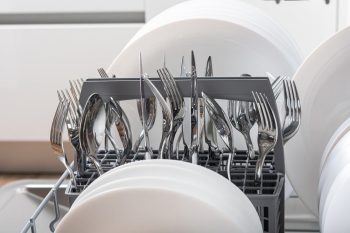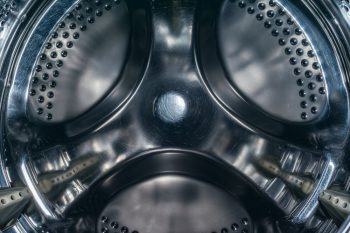
Washing machines are a staple in most households, offering convenience and efficiency in dealing with laundry. However, like all appliances, they can face issues. One common problem that many homeowners face is finding standing water in their washer. This issue can be frustrating, and if not addressed promptly, it can lead to other problems such as mold growth, unpleasant odors, and even damage to your machine. In this comprehensive guide, we will delve into the reasons behind this issue and provide solutions to fix it.
Standing water in your washer can be due to several reasons such as a kinked or bent drain hose, a clogged drain hose or pump, a faulty water pump, a broken lid mechanism, or issues with the washer’s controls or programming. You can fix it by performing a master reset, checking the drain hose, cleaning the pump filter, inspecting the lid switch assembly, checking for blockages, and running a spin cycle. If the problem persists, it’s recommended to consult a professional appliance repair service. Regular maintenance can help prevent this issue.
Why Does My Washer Have Standing Water?
There are several reasons why your washing machine might have standing water:
- Kinked or Bent Drain Hose: This is one of the most common reasons. If your drain hose is kinked or bent, it can slow down or completely stop the flow of water from your machine, causing water to remain in the drum.
- Clogged Drain Hose or Pump: Over time, debris, lint, and even small clothing items can clog the drain hose or the pump, preventing the water from draining.
- Faulty Water Pump: The pump is responsible for draining the water from the drum. If it’s malfunctioning or broken, the water won’t drain properly.
- Broken Lid Mechanism: If your washer’s lid mechanism is broken or not fully engaging, it can prevent the machine from draining correctly.
- Issues with Washer’s Controls or Programming: Sometimes, the washer’s controls might not be set correctly, or there might be a malfunction in the control system, preventing the washer from draining the water.
Risks of Standing Water in Your Washer
Standing water in your washer poses several risks:
- Unpleasant Odors: Standing water can lead to musty smells that can transfer to your clothes.
- Mold and Bacteria Growth: Moist, warm environments are ideal for mold and bacteria growth. If not addressed promptly, this can lead to health issues.
- Damage to Your Machine: Over time, standing water can damage your machine’s drum and other components.
- Potential Flooding: If the issue is not resolved, it could lead to water overflow, resulting in potential water damage to your home.
How to Fix a Washing Machine with Standing Water
Here are some steps you can take to troubleshoot and fix a washing machine with standing water:
- Perform a Master Reset: Unplug your washer for about one minute. Plug it back in, then open and close the door six times in 12 seconds to reset the computer.
- Check the Drain Hose: Inspect the drain hose for any kinks or clogs. Straighten the hose or remove the clog if necessary.
- Clean the Pump Filter: Locate the pump filter (usually at the bottom right-hand corner of the machine) and clean it.
- Inspect the Lid Switch Assembly: Test the lid switch assembly to ensure it’s functioning properly.
- Check for Blockages: Look for any debris, clothing, or soap blockages in the drain hose or pump.
- Run a Spin Cycle: Run a quick spin cycle with no clothes in the washer to see if the standing water drains.
If these steps don’t resolve the issue, it’s best to consult a professional appliance repair service. Some issues, such as a faulty water pump or a malfunctioning control system, may require professional expertise to fix.
Regular Maintenance to Prevent Standing Water
Prevention is always better than cure. Regular maintenance of your washing machine can help prevent the issue of standing water. Here are some tips:
- Clean Your Washer Regularly: Clean your washing machine about once a month or every 30 cycles to prevent buildup and soils.
- Inspect the Washer’s Hoses Monthly: Check the hoses for any signs of wear and tear and replace them every three to five years.
- Avoid Overloading Your Machine: Overloading can prevent your machine from draining properly.
By following these maintenance tips, you can help prevent standing water and keep your washing machine running efficiently.
In conclusion, standing water in your washing machine is a common issue that can be caused by a variety of factors. By understanding these causes and knowing how to troubleshoot them, you can ensure your washer remains in good working condition. If the problem persists, don’t hesitate to call a professional to avoid further damage to your machine.
Frequently Asked Questions
How often should I clean the pump filter of my washing machine?
The pump filter should be cleaned every 2 months or so, or whenever you notice a decrease in the draining speed or a peculiar noise during the spin cycle. This can vary depending on the type and usage of your machine. Always refer to your appliance’s user manual for specific instructions.
Is it normal for a little bit of water to remain in my washer after the cycle?
Yes, it is normal for a small amount of water to remain in the washer after the cycle. This water can be located in the hose or the pump and is not visible. However, if there is visible water left in the drum, that indicates a problem.
Can I use any type of detergent to clean my washing machine?
No, it’s best to use a washing machine cleaner or a homemade solution of vinegar and baking soda. Regular detergents can produce too many suds, which can damage the machine.
What are the signs of a faulty water pump?
Signs of a faulty water pump can include the washer not draining properly, making unusual noises, or leaking water. If you suspect a problem with the pump, it’s best to call a professional for diagnosis and repair.
What happens if I overload my washing machine?
Overloading your washing machine can result in poor cleaning and rinsing, excessive noise, increased wear and tear on the machine, and problems with draining or spinning. It’s best to load the machine to about 3/4 full for optimal performance.












